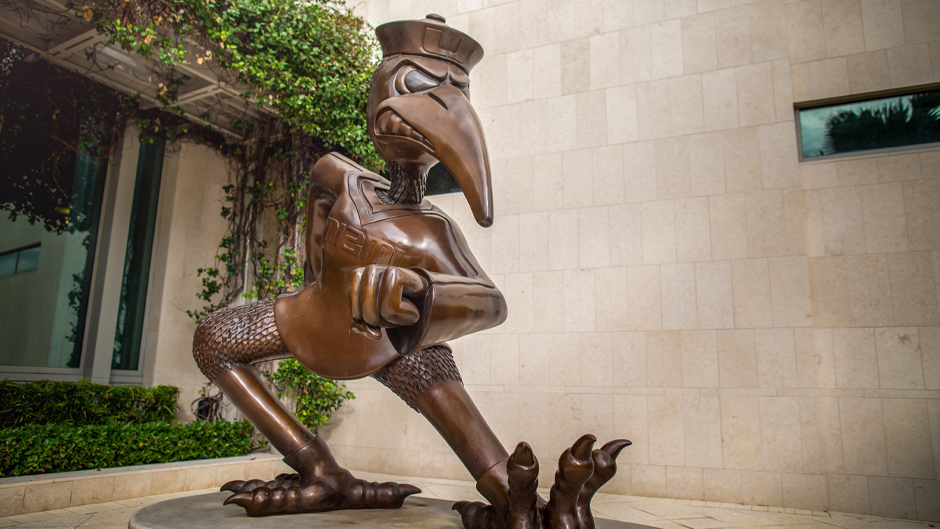Can you feel it? There’s a buzz of anticipation in the air in Coral Gables as the University of Miami welcomes a new cohort of ’Canes.
A plethora of ’Cane Kickoff orientation programming for students and families is on tap for the week. The following serves as additional information—and some fun facts—to help acclimate our newest members to the family.
EXPLORE CAMPUS
Established in 1925, the University of Miami is one of the United States’ top research universities—and a member of the prestigious Association of American Universities—and it’s located in one of the most multicultural cities in the world.
The Coral Gables Campus houses two colleges and eight schools, all set on 240 acres in the City of Coral Gables. In addition, the Leonard M. Miller School of Medicine is located at the Medical Campus in Miami, part of the University of Miami/Jackson Memorial Medical Center Complex. And the Marine Campus, home to the Rosenstiel School of Marine, Atmospheric, and Earth Science, is based on Virginia Key.
Find maps of each campus and driving directions here.
MEET THE MASCOT
If you haven’t met him yet, you’re likely to spot Sebastian the Ibis on campus a lot this week.
Folklore maintains that the ibis, a symbol of knowledge and a bird native to the Everglades and Egypt, is the last sign of wildlife to take shelter before a hurricane and the first to reappear after the storm. A symbol of resilience, the marsh bird became the unofficial mascot in 1926 when the yearbook adopted the name “Ibis.”
In 1957, Sebastian the Ibis was born. Through the years, Sebastian the Ibis has become one of the most recognizable college mascots in the United States.
Throw up the “U” and Sebastian is likely to join you for a photo opp.
MORE THAN JUST ORANGE AND GREEN
Now that you’re on campus, you may begin to hear “We bleed orange and green!” throughout orientation programming. But white is also among the colors chosen to represent the University. In 1926, the school’s colors were chosen to represent the Florida orange tree. Orange symbolizes the fruit of the tree, green represents the leaves, and white, the blossoms.
Learn more about the University’s traditions here.
NEW EATS ON CAMPUS
The Hurricane Food Court has a new addition this semester: The Halal Shack, offering a mix of Mediterranean and Middle Eastern flavors for a healthy eating experience.
The Hecht-Stanford and Mahoney-Pearson Dining Halls open on Monday, Aug. 14. New in the dining halls this fall are The Markets, reimagined takeout areas that include a wider array of takeout options including frozen entrees, snacks, and ice cream.
Explore all the dining options on campus—including menus and hours of operation—at UM Dining. Most dining locations are cashless, so be prepared with a credit/debit card, ’Cane Card, or mobile payment.
MIAMISMS
New to South Florida? Bienvenido. Both on campus and off, you may come across some words and phrases that may soon become part of your vocabulary. Learn more phrases that make Miami unique.
STAY IN THE KNOW
Subscribe to News@TheU, a weekday news email, and stay up to date on the latest research and student success stories. You’ll also learn from University experts about breaking news and trends. (Students and faculty and staff members automatically receive News@TheU.)

